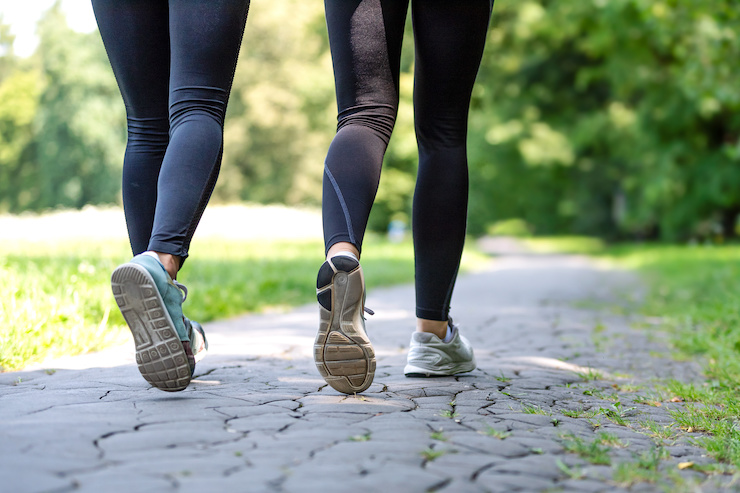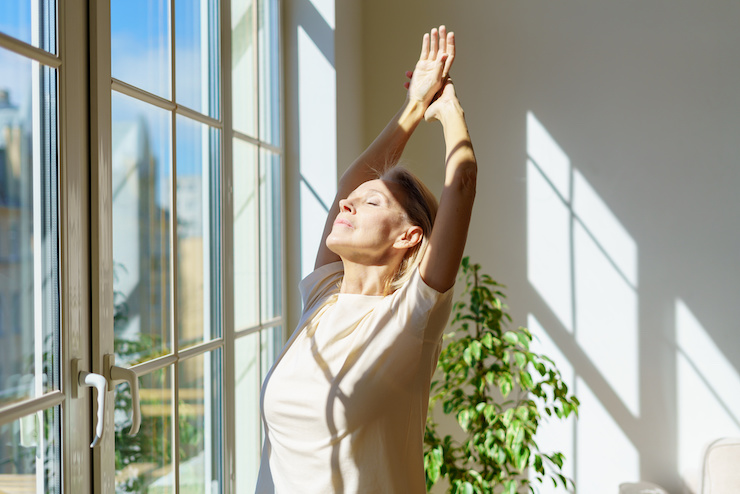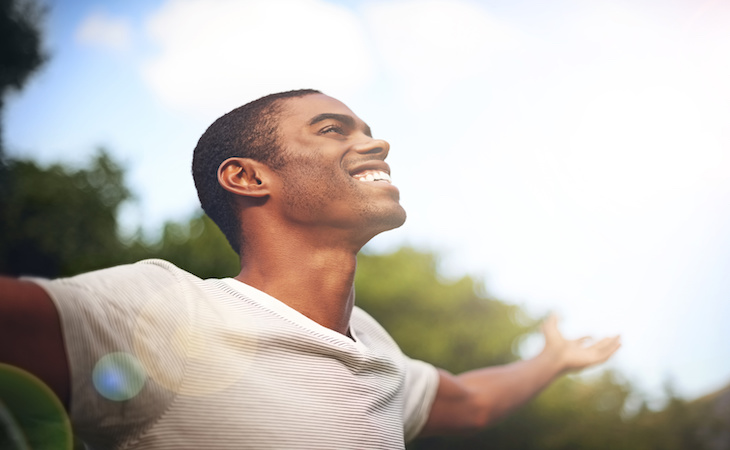
Natural and artificial light significantly influence sleep quality. Morning sunlight stops melatonin production and aligns your circadian rhythm, promoting deeper sleep at night. Evening exposure to artificial blue light delays sleep onset. Consistent light-dark cycles, daily sunlight exposure, and darkness at night support melatonin release and improve restorative sleep.
When you step into the sunlight each day, you may not think too much about how all that light is impacting your health. It turns out there actually is a key connection between light and sleep, though.
Ahead, we’ll explore how light plays a big role in your ability to get quality sleep, how artificial light can affect sleep, and how to strategically use natural light to improve your shuteye.

Types of light and their impact on sleep
Natural light
Natural light carries a full spectrum of colors that tell your brain it’s daytime, helping you feel alert through the morning and afternoon, and then sets you up to sleep soundly at night, explains Mollie Eastman, founder of Sleep Is A Skill.
“Morning sunshine signals your body to stop producing the sleep hormone melatonin, which sets the stage for deeper sleep that evening,” she says. “As the daylight light spectrum shifts toward red and orange hues in the late afternoon, it gently nudges your internal clock to prepare for down regulation in the evening.”
Artificial light
Some examples of artificial light include LED, fluorescent, and incandescent lights. Artificial light emits a cool, bluish glow, particularly from energy-efficient LED and fluorescent bulbs, notes Eastman.
“Evening exposure to these very bright and cooler lights can trick your brain into thinking it’s still daytime, delaying the natural wind‑down process and making it harder to fall asleep,” says Eastman. “Even traditional bright incandescent bulbs, which produce a warmer glow, can interfere with your body’s sleep‑preparation signals if used too close to bedtime.”
“Morning sunshine signals your body to stop producing the sleep hormone melatonin, which sets the stage for deeper sleep that evening.” – Mollie Eastman, founder of Sleep Is A Skill
The science behind light’s effect on sleep
Circadian rhythm
When it comes to light and sleep quality, look no further than how your circadian rhythm is impacted by light. Calling light a “primary cue” for your body’s master clock, Eastman says light ultimately governs your sleep-wake cycles.
She goes on to say bright light first thing in the morning shifts this clock earlier, helping those who might usually tend to stay up late feel more naturally inclined to rise with the sun.
Conversely, Eastman says exposure to bright lights in the evening pushes the clock later, encouraging a later bedtime.
“When light exposure is consistent—morning brightness followed by markedly dimmer evenings—your sleep pattern is supported to stay stable,” she says. “Irregular light exposure, such as using very bright and activating screens late at night or working under harsh overhead lights at odd hours, throws off this natural rhythm and increases the likelihood of insomnia or restless nights.”
Melatonin production
Then there’s the fact that light stifles melatonin production and darkness encourages it. Special light‑sensing cells in the eye detect brightness and light hues and send signals to suppress melatonin release from the brain’s pineal gland, says Eastman.
According to Eastman, even moderate indoor lighting in the two to three hours before bedtime can reduce melatonin levels measurably, pushing your natural sleepiness later and making it more difficult to fall asleep at your usual time.
“Total darkness, on the other hand, allows melatonin to rise uninterrupted, promoting deeper and more restorative sleep,” she adds.

Benefits of natural light exposure for healthy sleep
On an episode of Eastman’s “Sleep Is A Skill” podcast, guest Sachin Panda, PhD, from the Salk Institute, recommends we all all get at least one hour of natural sunlight each day to support mitochondrial melatonin production and to ensure a robust evening melatonin surge.
Reflecting on natural light benefits, Eastman says this: “Regular exposure to natural light not only strengthens the day-night signal your body relies on for consistent sleep but also sharpens your daytime alertness and energy.”
Morning sunshine benefits your energy and lays the groundwork for deeper, more restorative sleep later in the day.
Additionally, natural light boosts serotonin—the brain’s “feel‑good” chemical—which elevates mood throughout the day and promotes a smoother transition into restful sleep as evening falls, says Eastman.
How to use natural light to improve your sleep
Get outside early
You should aim to spend at least 15 to 30 minutes outdoors within the first hour of waking—ideally facing open sky for full-spectrum exposure—without sunglasses or a hat, says Eastman.
If your schedule keeps you indoors, you can position your breakfast spot or workspace near a window and open the window to get unfiltered light, she adds.
Let’s say it’s a day when you just can’t get outside. In this case, Eastman suggests sitting by a bright light set to 10,000 lux for 20 to 30 minutes early in the morning as a substitute.
Furthermore, she recommends balancing that light with red light therapy to offset the “straight blue light” from the bright light.
Go for a midday walk
Something else you can do is get outside during the day. “A midday outdoor break reinforces alertness and helps maintain energy levels,” says Eastman.
FAQs
Does light affect your sleep?
Absolutely! It can both positively and negatively impact sleep. Getting out in the early morning sunshine can correctly set your body’s internal clock, creating signals that it will be time to wind down later in the day to sleep. Too much light in the evening, especially blue light, can make your body feel more awake, which can keep you up or even produce insomnia.
Which color light is good for sleep?
“Light in the warm amber to red spectrum has minimal impact on melatonin and can actually support its release during evening wind‑down,” says Eastman. “We are aiming to mimic the fire tones that we evolved under.”
Is it good to sleep with lights off?
Yes, it is. “Complete darkness maximizes melatonin release, enhances both deep and REM sleep stages and reduces the likelihood of nighttime awakenings,” says Eastman. “Treating darkness as an essential part of your bedtime ritual can help you release worry about sleep and settle into rest more easily.”
Ever wondered why you feel so sleepy after spending time outside? Here’s why the sun makes you so tired.
Shelby Deering
Shelby Deering is a Madison, Wisconsin-based freelance lifestyle writer contributing home design and health articles to national publications. When she’s not writing, you’ll find her hiking, running, or walking with her husband and corgi, Dolly.



